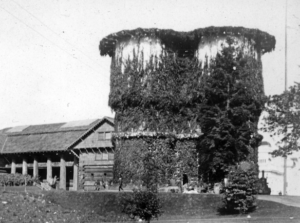
Are the concrete rectangular pads on the NE corner of NW 28th and Thurman the footings of the 1905 Lewis & Clark Exposition water towers?
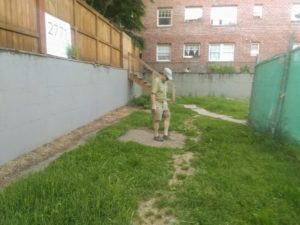
The past is in itself unobservable. After leading walking tours past the empty lot across from Cracker Jacks on the NE corner of the intersection of NW 28th and Thurman for years, we were motivated to attempt to corroborate the water tower narrative because we thought that the site was finally going to be developed because of arrival of a construction fence. As historians we have to use indicators (in this case a cluster of concrete pads) and postulate a causal relation between the observable facts. Typically, on tours the pads are not that exciting so they never made it onto the tour as a stopping point.
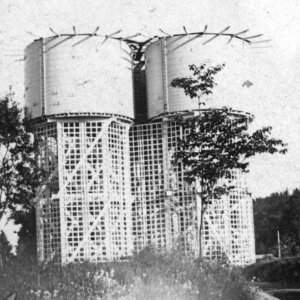
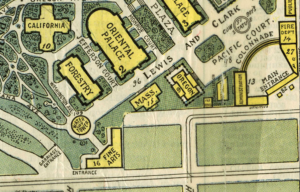
Using the lens of the archeologist we explored the theory that the multiple concrete pads were the remainders of the footings of massive water towers. Neighbors, using the image of the 1905 exposition’s fairgrounds as shown in contemporary guidebooks, had asserted that this was the site of the water towers, so it seemed reasonable. However, the layout of the fair was on a different axis than the street grid iron, which can throw us off.
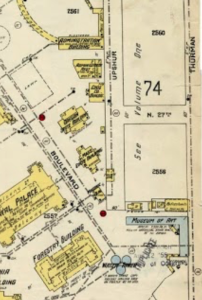
But when we opened up the June 1905 Sanborn map to the page for the site, we could see that in 1905 our location contained the western end of the Museum of Art (“Fine Art Building”), not the water towers, which were farther north, in the middle of what is now the intersection of NW 28th and Upshur. It is possible the concrete pads are related to that building—more research and measuring is needed. Unfortunately the artistic rendering map of the 1905 “Lewis and Clark Centennial and American Pacific Exposition and Oriental Fair” has created a false narrative. We reached out to the long time owners of the property based on a neighbor recalling witnessing the arrival of the pads 30 years ago. They kindly responded “they were footings for a mixed use building (commercial and residential) that we were going to build in the mid 1990s…there is no interesting historical story behind the vacant lot.” There may be no remains from the 1905 Fair but there is an interesting historical story.

